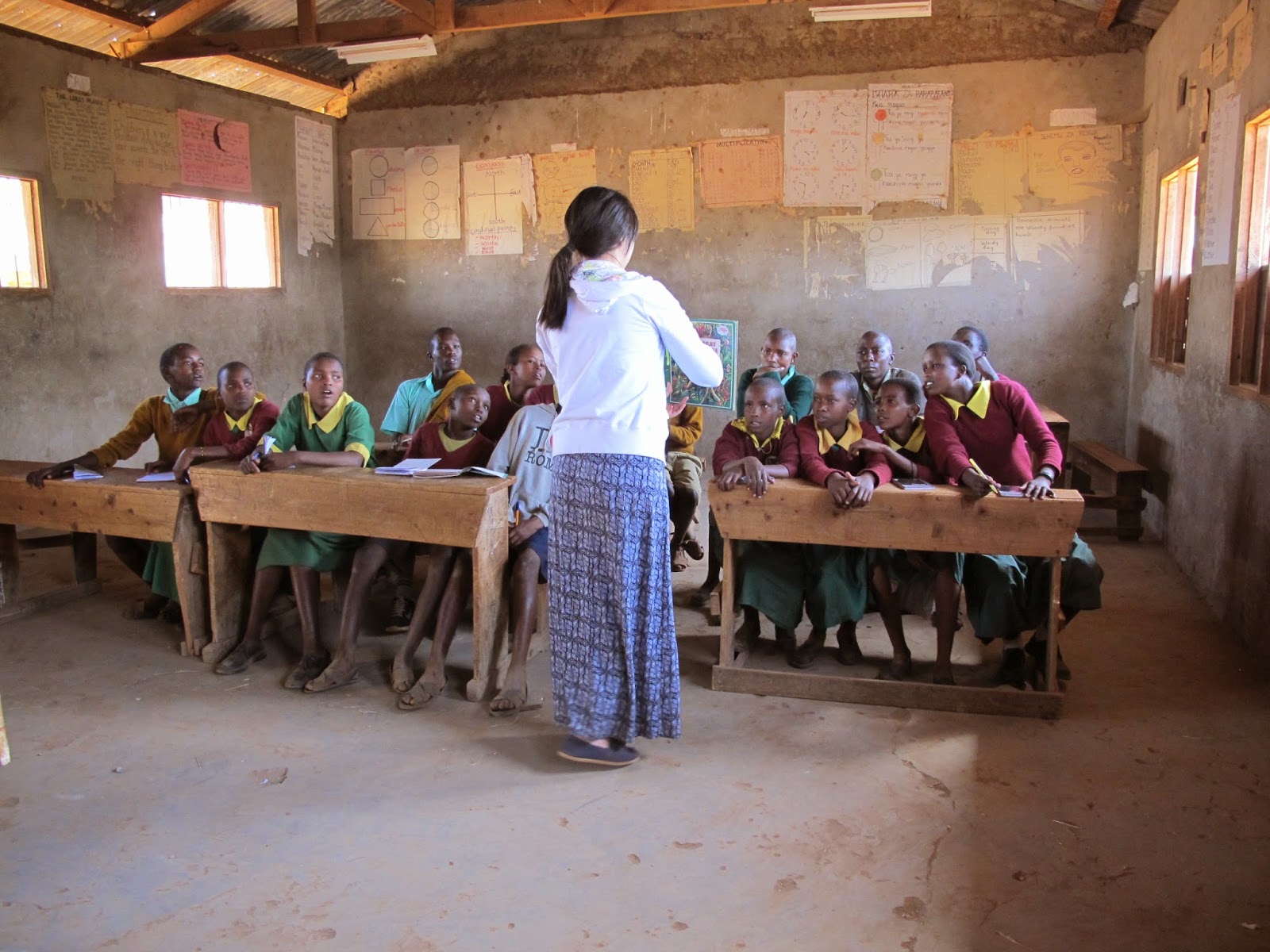Habari from Mpala! Despite the feeling temporarily narcoleptic, jetlag has not been too bad and Kate and I hit the ground running yesterday afternoon with school visits. We piled into the Land Rover alongside Nancy, Helen, Dayton and the two PEI interns, Alex and Annelies. Taking such a large group allowed us to visit three schools in total, Kimanjo Primary School, Kimanjo Secondary School and Ngabolo Primary School.
I went to Kimanjo Primary School with Alex, Helen and Dayton (Helen and Dayton later headed to Kimanjo Secondary School down the road). We took turns reading The Great Kapok Tree to the students, which promotes a message of stewardship for the Amazon Rainforest (each of the animals that lives in the tree or depends on it pleads with a man to not chop down the tree for different reasons). The book tied in perfectly to the themes of this particular club’s preparations for Community Conservation Day (a large event with all of the clubs coming together to share ideas and performances). The Kimanjo Primary School club had prepared a dramatic piece that compared two villages, one which was dedicated to preserving trees and one that cut the trees down. People in the area often cut down trees for fuel and to make charcoal, which ultimately has adverse effects on the wildlife by taking away food and shelter. In the drama, ultimately the village dedicated to planting and preserving trees flourishes. The villagers share their knowledge with the neighbors and by the end of the skit both villages are planting trees. The message of the skit fits with the mission of the Northern Kenyan Conservation Clubs. We’re trying to promote education about conservation within the clubs themselves, but also empower students to share that knowledge with their families and greater communities. Importantly, the skit is in English and Swahili, though the majority of the play is in Swahili, ensuring the bulk of the attendants will be able to understand it. The Kimanjo club continued to build on this theme with the demonstration they are planning to share on Community Conservation Day. The students made their own charcoal using dung and charcoal dust, eliminating the need for wood. They will share this technique with the community and hopefully others will follow their example.
Visiting the school gave me a bit more insight to what we’re trying to accomplish with this project. The Great Kapok Tree takes place in the Amazon, which is a world away for Kenyan students (and the vast majority of American students). We began by explaining and showing where Kenya and the Amazon are in relation to each other on the map. As we went through the different animals, we checked if the students knew what they were (boa constrictor and sloth in particular were problematic). This is the same sort of problem (so to speak) that will are attempting to address with this project. We want to make the lessons relatable to students and part of that is using biomes and animals they recognize and know. That said, we were able to relate the new animals to various Kenyan animals (i.e. a jaguar is like a leopard; a sloth is slow like a tortoise). We’ll definitely try to mimic that same sort of thinking in the American curriculum.
From a teaching perspective, I was really struck by the classroom and the number of students assigned to each class. While sitting in the head teacher's office, we noticed the enrollment numbers for each class, which were quite large. The overall teacher-student ratio is 1:71. The head teacher told us it's frustrating for many new teachers, who are qualified, as the government won't hire them. Though that is an issue with budgets in the US, it's not nearly to the same extreme. Thinking about my own teaching, I have had classes as small as five students and as large as thirty-nine. The difference in what you can do in terms of activities is huge. It is unsurprising that with classes this large Kenyan students aren't often engaged in full discussions. The conservation clubs try to promote experiential learning as much as possible and Nancy has helped to facilitate workshops for teachers to learn new methods. The layout of the classroom is very basic and all of the posters hanging on the walls were created by hand and are glued to the wall. These posters get ripped down at the end of the year, often leaving part of the poster behind. It's definitely made me feel spoiled about the classrooms I have taught in and will certainly make me think twice before complaining about wifi being slow!
 |
| Twende! Let's go! |
 |
| Students practicing their poem for Community Conservation Day. |
 |
| Helen reading to students. |
 |
| The conservation club even has it's own little shed! You can't see it, but the charcoal balls were drying on the roof. |
 |
| Crossing the river on the way home. |
 |
| Giraffe sighting on the way home! |
No comments:
Post a Comment